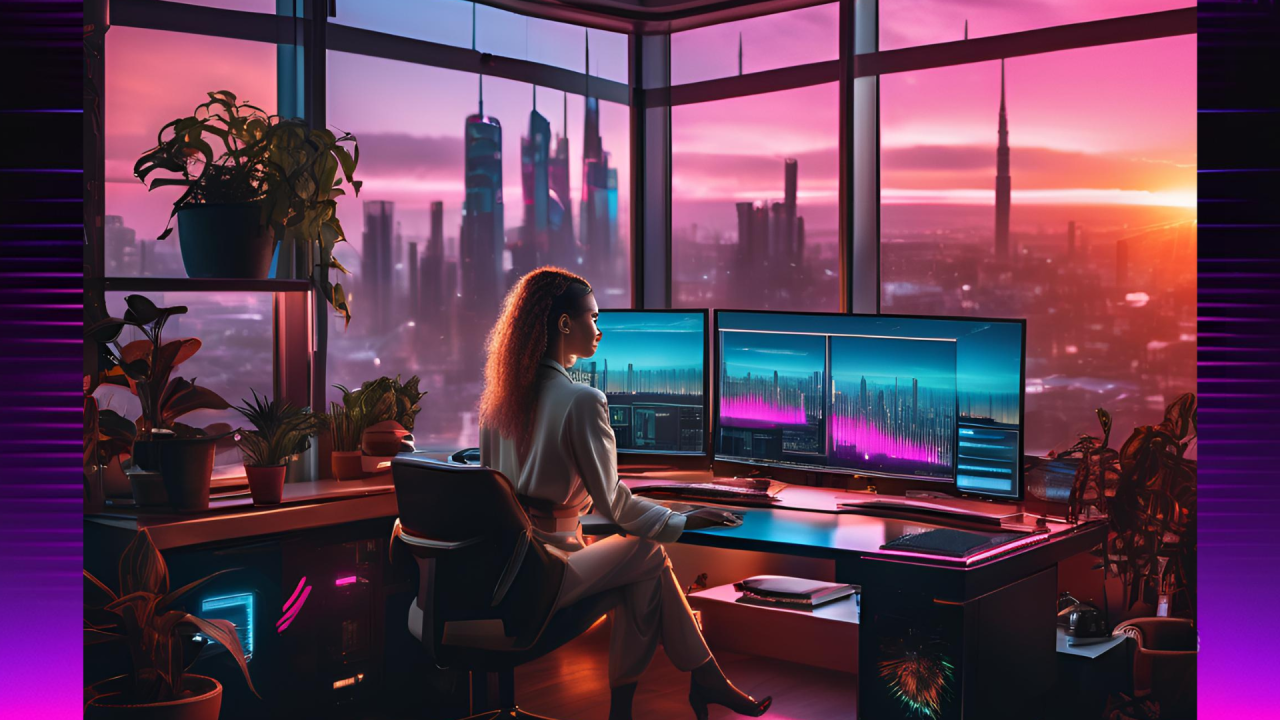Is AI ever not part of the conversation?
In recent years, much of the advertising industry has been consumed with data-driven strategies & hyper-targeting. Now, AI is building the best audiences and the power of automation is churning out MORE creative than ever – but a lot of it sucks. I’ve been getting hit with ads on how I should create my own “AI Agency” and the image is a random, creepy skull smoking a cigar in front of a tie dye background. Sure, I stopped and it looked at it – but it was mostly to marvel at how bad it looked. The targeting did its job – the creative did not. As such, Creative work had taken the backseat as data agencies became the stars of the show, offering highly efficient ways to reach specific audiences, track ROI, and produce quick turnaround times. However, I’d argue that the importance of creative work is resurging in a big way.
But First – the previous shift to Data over Creative
There was a time when targeting was so precise that many marketers could afford to neglect the creative element of campaigns. I’m not joking here. I once saw a mistake where the ad was run with NO ad copy, no graphic text, and the wrong Call to Action. It was literally a picture of the business owner wearing a giant costume – and it was their TOP performer! That’s how good the targeting was. As long as the right person saw the ad, performance would follow. But the reality is beginning to shift back to focus on quality creative choices. With increased restrictions on third-party cookies and tighter privacy laws like GDPR and Apple’s iOS updates, the once-reliable tools of data brokers and hyper-targeting have become less effective. This is leading to a fragmentation of the signals advertisers once relied upon to personalize campaigns.
A Creative Renaissance
As an example, Meta’s Advantage+ algorithms automate targeting and creative optimizations, but the quality of your creative remains critical to overall campaign performance. Meta now attempts to adapt your ad copy and visuals using machine learning. It can dynamically modify images by adjusting their aspect ratios or enhancing backgrounds and even suggest new headlines. While this is designed to increase conversions, it doesn’t always align with a brand’s aesthetic or messaging. So, advertisers need to monitor these adjustments carefully, turning off enhancements that do not align with their goals or brand identity. In other words, the AI only focuses on conversions but may cause long term damage with inconsistent brand standards.
As a result, agencies are seeing that while data is still essential, it’s no longer enough on its own. What truly sets brands apart today is engaging, relevant creative that can connect emotionally with audiences. In fact, platforms like Google and TikTok attribute a significant portion of ad performance – up to 40% of sales lift – to creative choices rather than targeting alone (source: Advertising Week)
You can’t just do an A/B split test for audiences and tangible values anymore. You’ve got to start paying attention to creative split tests. For example, brands like Fjällräven have already seen remarkable success by prioritizing creative testing and optimization. Their focus on iterative feedback and creative testing led to substantial improvements in campaign performance, with a 70% increase in ad recall and a 392% increase in click-through rates (source: Creativepool)
Video Content Leads the Data Charge
According to a report by Wyzowl, 96% of consumers have watched an “explainer” video to learn more about a product or service. Think about it. The number one search engine in the world is Google. Number Two is YOUTUBE! To that point, HubSpot notes that video content drives 49% faster revenue growth for marketers compared to those who don’t use video. Google reports that ads with strong video creative led to a 50% higher chance of increasing brand awareness and a 34% higher chance of boosting purchase intent. Additionally, video ads that focus on creative storytelling can increase conversion rates by up to 80%. A study by Animoto shows that 73% of consumers are more likely to make a purchase after watching a video. Notably, consumers also ranked videos as their number one favorite type of content to see from brands on social media.
This is all being reflected in social media as well. Platforms like TikTok and Instagram, which prioritize video formats, demonstrate how important visually engaging content is to algorithm performance. For example, TikTok’s algorithm heavily favors creative content over hard-sell, data-driven approaches, with engagement driven by entertainment and relatability.
CONCLUSION
The pendulum is swinging back towards creative excellence. Agencies that continue to rely solely on data without reinvesting in creative talent and innovation are at risk of falling behind. Those that embrace the new balance between data and creativity are poised to thrive in this evolving digital landscape. The most successful strategies will be those that use data not just for targeting but also for informing the creative process itself. This isn’t one vs the other – both AI and creativity need to coexist to maximize results, ensuring that automated processes don’t compromise a brand’s unique voice and aesthetic.





